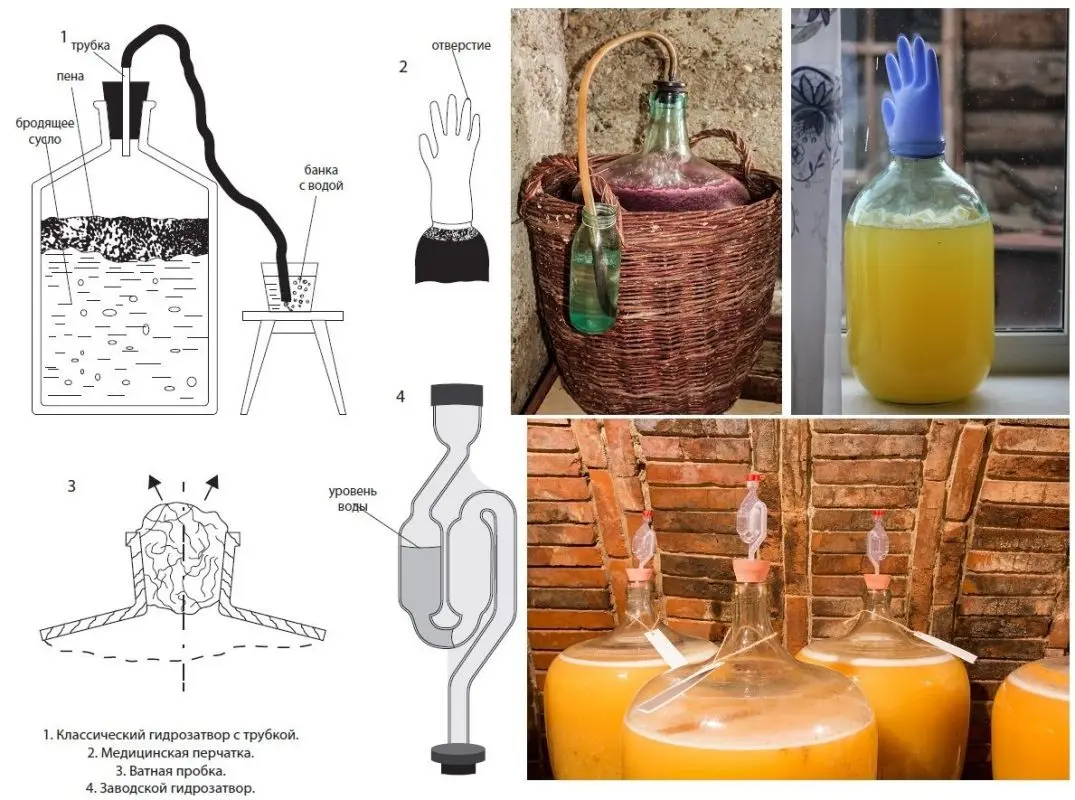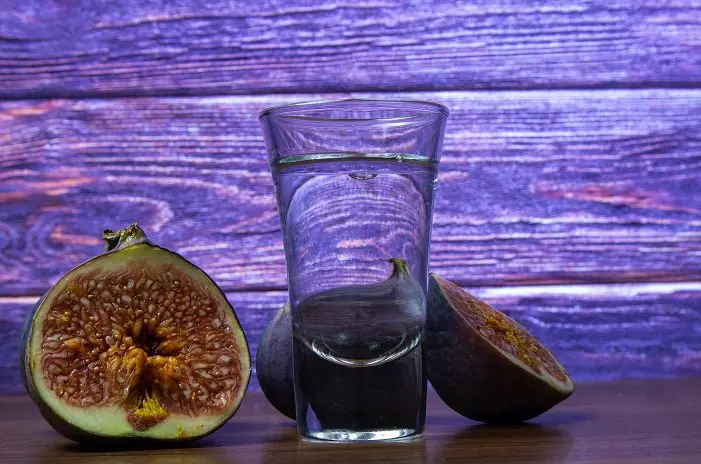Due to the high sugar content of the fruit, the yield of moonshine from figs pleasantly surprises even beginners. At the same time, the characteristic fruity aroma and mild taste remain. We will consider the correct recipe for fig mash and a distillation technique that preserves the organoleptic properties of the distillate.
Any ripe figs are suitable for processing for moonshine. You can even use moldy, but not rotten fruits. Processing with boiling water will destroy pathogenic microorganisms. The proposed cooking technology is designed to work with dried fruits, but it is also suitable for fresh fruits, including proportions.
Ingredients:
- figs – 3 kg;
- sugar – 1 kg (optional);
- water – 10 liters (and another 4 liters for each kilogram of sugar);
- citric acid – 25 grams;
- yeast – wine or sourdough for 12 liters of must, or 20 grams of dry (100 grams of pressed).
The sugar content of dried figs is 50-70%. This means that with 1 kg of raw materials you can get a maximum of 770 ml of moonshine with a strength of 40 degrees. In practice, the amount of drink is always lower by 10-15%. The introduction of 1 kg of beet sugar increases the yield by 1,1 liters (40%), but at the same time slightly levels the aroma and taste of the distillate. To get real fruit moonshine, it is advisable to make mash without sugar, especially since the content of natural fructose in figs allows this.
On baking dry or pressed yeast, fig mash will win back in 4-7 days, but the smell of the fruit will not be so noticeable. Wine yeast or homemade raisin sourdough ferment the must longer – 25-40 days, but the characteristic aroma remains. If there is no hurry, I advise you to use sourdough or wine yeast.
Citric acid (can be replaced with the juice of 4 medium lemons) stabilizes the acidity of the must, as a result, fermentation is more active.
Fig mash recipe
1. If there is no wine yeast, but you don’t want to use ordinary yeast, 3-4 days before working with raw materials, you need to make a starter: pour 100 grams of unwashed raisins (or any fresh berries that have been transferred) into a jar, add 30 grams of sugar and pour 300 ml of water . Stir, cover the jar with gauze and put in a dark place at room temperature. When foam appears on the surface, a slight smell of fermentation and hiss, the starter is ready.
If mold is observed, then the raisins were bad and you need to start preparing the sourdough first on other berries.
2. Boil 65% of the amount of water used (6,5 liters in the recipe). Wash the figs, divide into 4-6 parts, put in a deep enameled pan. Add sugar (optional). Pour the fruits with boiling water, cover and leave for 60 minutes.
3. Strain the broth through cheesecloth. Pour the liquid part into a separate pan. Grind the pulp with a meat grinder or in any other way, then dilute with the remaining amount of cold, unboiled water (3,5 liters) and add to the drained broth. Dilute yeast (if using) according to label directions.
4. When the temperature of the mixed fig must is below 28°C, add the starter (with raisins) or yeast. Stir, then pour the mash into a fermentation tank (I advise you to leave at least 20% of the volume free for foam).
5. Install any water seal on the neck, for example, a medical glove, in one of the fingers of which make a hole with a needle.

6. Transfer the mash from the figs to a dark room (cover) with a stable temperature of 18-28°C. Leave until the end of fermentation.
Depending on the yeast (wine or bakery) and temperature, fermentation lasts 4-45 days, then the water seal stops releasing gas (the glove is blown off), the mash becomes bitter in taste without notes of sweetness, brightens, and a layer of sediment appears at the bottom.
Obtaining fig moonshine
7. Filter the spent mash through gauze or a thick cloth to remove solid particles that can burn during distillation. Press the pulp well.
8. Overtake the mash for the first time without separation into fractions. Collect the distillate before the strength in the stream falls below 30%, it may turn out to be cloudy, this is normal.
9. Measure the strength of moonshine. Determine the total amount of absolute alcohol (multiply the volume by the percentage of the fortress and divide by 100). Do not clean with charcoal or other methods to preserve the flavor of the fruit.
10. Dilute all collected distillate with water up to 20% and make a second distillation. Collect the first 12-15% of the yield from the amount of pure alcohol in a separate container and use it only for technical purposes. This is a harmful fraction (“head”) containing substances hazardous to health.
11. Select the “body” (desired distillate) until the strength in the stream falls below 45%, then finish the distillation or collect the “tails” (give cloudiness and an unpleasant odor) separately.
12. Dilute the finished moonshine from figs with water up to 40-45%, pour into glass containers, close tightly and leave for 2-3 days to stabilize.










